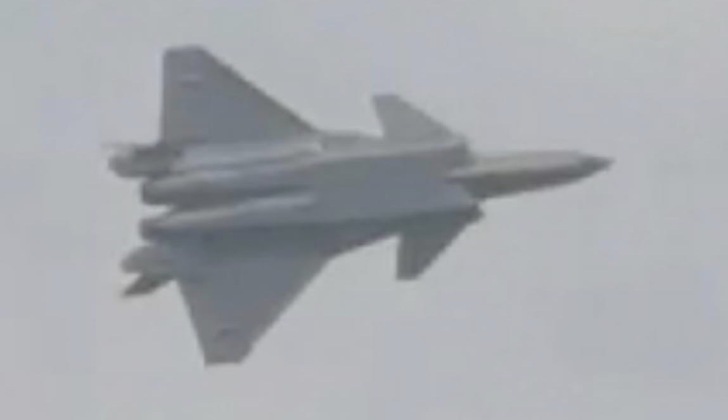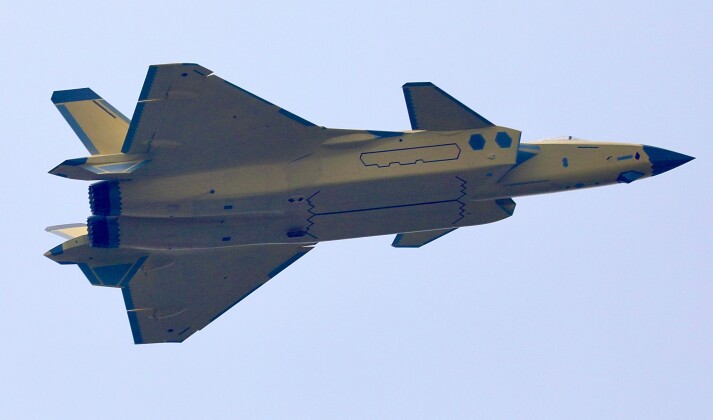The first image is allegedly showing a Chinese J-20 fifth-generation fighter flight testing the long-awaited WS-15 engine have been released, following multiple indications that the new engine is set to enter service by 2025. The WS-15 was previously tested on a number of larger non-combat airframes, and its integration onto a fighter indicates it has reached an advanced stage of development. As is typical for initial tests the fighter used one WS-15 and one older WS-10 engine, as the reliability of the new engine remains uncertain so flying it with an older one provides engine redundancy and allows the fighter to land on the power of the WS-10 if needed. Designed by the Shenyang Aeroengine Research Institute, the WS-15 is to be manufactured by the Xian Aeroengine Corporation and is expected to have greater fuel efficiency and far greater power than its predecessor, providing the J-20 with a much greater endurance and superior flight performance. The engine is expected to make the J-20 the world’s leader among fighters and interceptors in terms of thrust output, at least until the first sixth generation fighters enter service, meaning the engine will have a greater thrust and any other used by a twin-engine fighter. It’s closest competitors are the upcoming Saturn 30 to be used by the Russian Su-57 and possibly the Su-34 fighters, the D-30 used by the MiG-31, and the F119 used by the American F-22.. The most powerful fighter engine and service worldwide today is the F135 which powers the American F-35 single engine fighter, with a number of reports indicating that the WS-15 could rival it in power.

Although Chinese military aviation has come to lead the world in a number of areas, its engine technology is still remain behind with the American F119 and F135 and Russian AL-41 all still outperforming any existing Chinese designs. The WS-15 program appears intended to leapfrog these older engines and place China on par with if not ahead of the world leaders. The recent transition to allow J-10 single engine fighters to use indigenous WS-10 engines was a major indicator of their growing perceived reliability, as single engine fighters lack engine redundancy meaning if the WS-10 failed during flight the aircraft would certainly be destroyed. The J-20 itself previously used Russian AL-31 engines developed for the Su-34 strike fighter as a stopgap until the WS-10’s design had been further refined, although the Russian design is still marginally more powerful. Integration of the WS-15 is expected to belatedly allow the J-20 to fly supersonically for sustained periods without using afterburners, providing a capability known as ‘supercruise’ which has been a key requirement for several 21st century fighter programs.

With new variants of the J-20 integrating thrust vectoring engines for greater low speed manoeuvrability, the WS-15’s increased thrust will further improve this and also facilitate greater high speed manoeuvrability, as well as potentially powering new more formidable sensors. It remains to be seen what other fighters the WS-15 could eventually power, with some speculation that an upcoming fifth generation single engine fighter aimed at export markets could use the same powerplant. The J-20 is one of just two fifth generation fighters fielded at squadron level strength and in production anywhere in the world today alongside the American F-35, although other fifth generation fighter designs including a naval fighter derived from the FC-31 program have been pursued in China. While Chinese combat aviation is considered a fully peer competitor to the United States in terms of avionics, missiles and to some extent even stealth technologies, bridging the gap in engine technologies would be a major step towards complete parity and eventually possibly primacy in the field.
